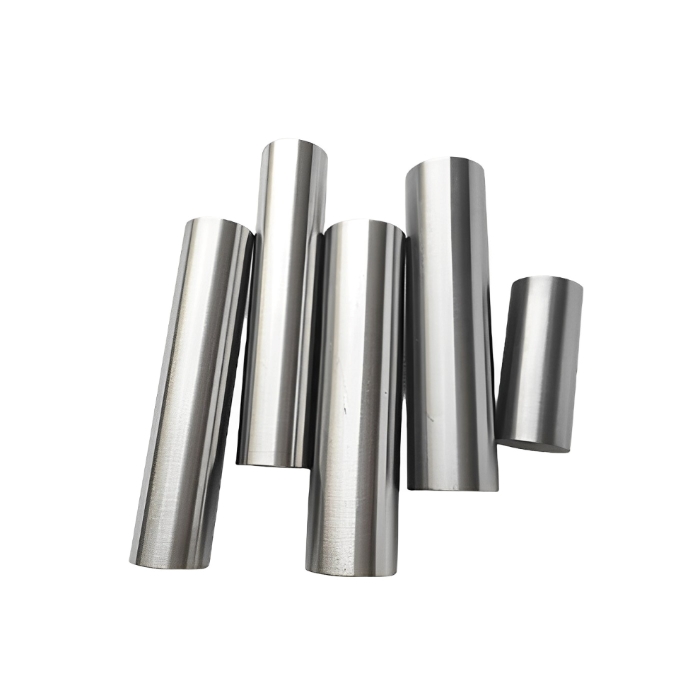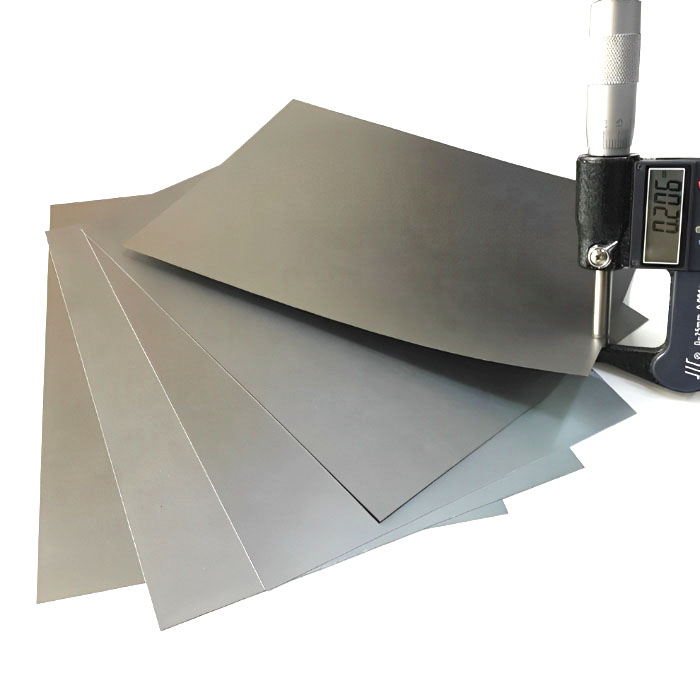High Purity Nb Niobium Rod For Superconductor
Description
Niobium rods and Niobium bars are usually used in the production of niobium wire, and can also be used in the production of niobium workpieces. It can be used as the internal structural parts of high-temperature furnaces and accessories in corrosion-resistant chemical equipment.Our niobium bars and rods are used in a vast array of applications. Some of these uses include sodium vapor lamps, HD television backlighting, capacitors, jewelry and chemical processing equipment. Our manufacturing process uses cold rolling and annealing to produce bars and rods with ideal mechanical properties and uniform grain structures throughout the rod or bar.
Our RRR grade niobium bars, rods and billets are commonly used in the production of superconductor wire or in supercolliders a major labs and symposiums around the world.
Type and Size:
Metallic impurities, ppm max by weight, Balance - Niobium
| Element | Fe | Mo | Ta | Ni | Si | W | Zr | Hf |
| Content | 50 | 100 | 1000 | 50 | 50 | 300 | 200 | 200 |
Non-Metallic impurities, ppm max by weight
| Element | C | H | O | N |
| Content | 100 | 15 | 150 | 100 |
Mechanical properties for annealed rods 0.125in(3.13mm)-2.5in(63.5mm)
| Ultimate Tensile Strength (MPa) | 125 |
| Yield strength (MPa, 2% offeset) | 73 |
| Elongation(%, 1-in gage length) | 25 |
Dimensional Tolerance for Rods and Wires
| Diameter in (mm) | Tolerance in (±mm) |
| 0.020-0.030(0.51-0.76) | 0.00075(0.019) |
| 0.030-0.060(0.76-1.52) | 0.001(0.025) |
| 0.060-0.090(1.52-2.29) | 0.0015(0.038) |
| 0.090-0.125(2.29-3.18) | 0.002(0.051) |
| 0.125-0.187(3.18-4.75) | 0.003(0.076) |
| 0.187-0.375(4.75-9.53) | 0.004(0.102) |
| 0.375-0.500(9.53-12.7) | 0.005(0.127) |
| 0500-0.625(12.7-15.9) | 0.007(0.178) |
| 0.625-0.750 (15.9-19.1) | 0.008(0.203) |
| 0.750-1.000 (19.1-25.4) | 0.010(0.254) |
| 1.000-1.500 (25.4-38.1) | 0.015(0.381) |
| 1.500-2.000 (38.1-50.8) | 0.020(0.508) |
| 2.000-2.500 (50.8-63.5) | 0.030(0.762) |
Features
Grade:RO4200,RO4210
Purity: 99.7% 99.9%, 99.95%
Manufacturing Standard: ASTM B392-99
Applications
1. Electronic industry, chemistry, electrical, and pharmaceutical industry.
2. For steel, ceramics, electronics, nuclear energy industries, and superconductor technology.
3. For superconductors, melted cast ingots, and alloying agents.
4. Widely used in manufacturing various kinds of alloy steel, high-temperature alloy, optical glass, cutting tool, electronics, superconducting materials, and other industries.









